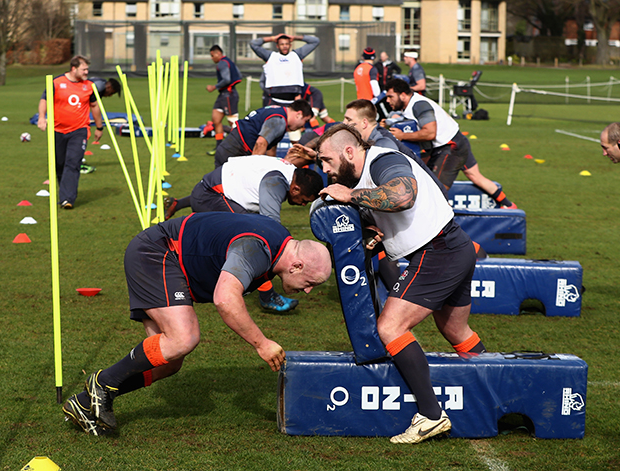Unlike most sports, rugby union has been professional for less than two decades. Most fans find it fascinating that a sport that has its origins in the early 1800s managed to retain its amateur status for so long in a world where the primary objective of organized sports is to generate revenue that is then redirected into their growth and development. Others equally wonder why a sport that has well over 500 million fans worldwide, 10 million players, and 128 national member federations didn’t go the professional route sooner and why it ultimately decided to become an “open” sport when it had numerous opportunities to do so in its century and a half of existence.
Why did rugby union go professional? In 1995 Rugby union went professional for two main reasons. First, in order to even the playing field as it was believed that many of its members had found a way to incentivize their plays under the table in what came to be known as “shamateurism”. Second, it was to stop rival code Rugby League from enticing its players to defect by offering them attractive salaries and benefits.

A Storied History
Rugby was invented at Rugby School in Warwickshire, England by a youngster named William Webb Ellis who decided, contrary to the rules of football at the time, to pick up the ball in his arms and run with it.
Ellis’ single uncharacteristic act birthed a tradition at the school that carried on for years after his departure and ultimately morphed into a fairly regulated sport when three senior students – William Delafield Arnold, W.W. Shirley (the son of the former headmaster), and Frederick Hutchins – drafted its first widely-recognized set of rules in 1845.
As the students moved on to institutions of higher learning, they took the sport and its rules with them – a development that led to the codification of more detailed laws like the Cambridge Rules of 1848. This early form however had some overlap with soccer which was ultimately addressed at the formation of the Football Association (FA) in 1863.
After the FA’s formation, the governing body undertook the arduous task of drafting its own set of rules which would govern soccer from that point henceforth. Unfortunately, the new rules outlawed elements like hacking (tripping/kicking players in the shin) and handling of the ball which was prevalent in rugby.
The decision did not sit well with some of the clubs who fancied the rugby style of play. Further changes necessitated a mass exodus led by Blackheath Club and the subsequent formation of the Rugby Football Union (RFU) in 1871.
Early Calls for Professionalism
Rugby retained and even insisted on amateurism for its first two decades of existence. The model however became unsustainable as a majority of its players were semi-professionals – they had to juggle the sport with formal employment thus stifling its exponential growth.
Social and class divisions became more evident as time progressed with some in the upper class implying that the sport should only be played by those who could afford it and those in the middle to lower classes fiercely opposing that sentiment.
Rugby’s counterpart, soccer, had had its own struggle with allowing professionalism before finally agreeing to it in 1885. Rather than entertain the idea, the RFU adamantly opposed it despite the fact that it would have offered its players compensation for the time that they took off work and thus helped the sport to grow.
The decision was particularly unpopular with northern rugby clubs who were displeased with the RFU’s selective application of amateurism as it allowed other players like the British Isles team that toured Australia in 1888 to receive payment. Northern rugby clubs were also underrepresented in the RFU as compared to their Southern counterparts.
Visibly frustrated with the RFU’s stance, 22 northern clubs met in late August 1895 and made a unanimous decision to secede from the RFU and form the Northern Rugby Football Union, which subsequently rebranded itself as the Rugby League in 1922.
Do or Die
In the years that followed, rugby continued to grow into a global sport with countries outside England like New Zealand, South Africa, and Australia fielding and producing some of the best teams and players respectively.
As the sport grew, so did its audience. This development further highlighted its many financial possibilities, which rugby’s larger governing body – the International Rugby Football Board (IRB, now World Rugby) – had yet to capitalize on.
By the mid to late 1980s and early 1990s, amateur rugby union was facing significant threats from several fronts with many of its member associations being accused of “shamateurism”, which was a term coined to refer to associations and teams who found ways to compensate players off the books.
England’s RFU were particularly unyielding about fighting professionalism and was even against the formation of the Rugby World Cup as they feared that it would encourage it since players would have a chance to interact and discuss their earnings.
Their efforts were nevertheless in vain as even their own players had found ways around amateurism rules such as creating companies through which payments could be made and being paid for activities that were off the field such as “communication” (interviews and appearances).
Other rival competitions and factions like Australia’s Super League and World Rugby Corporation were also offering top national rugby unions and their players various revenue-generating opportunities which would have totally robbed rugby unions of the diminishing control they had over the fast-growing sport.
To address these concerns, the IRB finally made the decision to allow professionalism on August 26, 1995 – two months after the history 1995 Rugby World Cup which was hosted and won by South Africa. The decision had the desired effect as it stopped the poaching of rugby union players by rival outfits and encouraged players to commit to their respective rugby unions.
The Aftermath
Despite the initial skepticism against professionalism, its adoption has positively impacted the sport and led to the creation of key competitions such as the Heineken Cup (now European Rugby Champions Cup) and Super Rugby for clubs in the northern and southern hemispheres respectively.
The radical increase in revenue has enabled players to fully focus on the sport, which has catapulted it to the stratosphere in all respects. Most rugby historians and pundits agree that players are now stronger, faster, and fitter than ever with evidently better strength and conditioning and an abundance of opportunities and incentives to continue getting better.
While this is true, there have also been a few negative effects such as the growing void between grassroots rugby and its elite counterparts. There has also been an increasing preference for club competitions over national ones due to the former’s financial opportunities.
This has also contributed to a divide between northern and southern hemisphere rugby unions with each largely preferring to compete against those in their respective hemispheres with the exception of the quadrennial Rugby World Cup.
